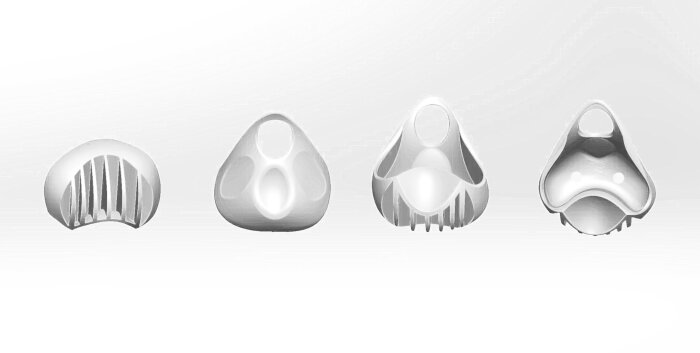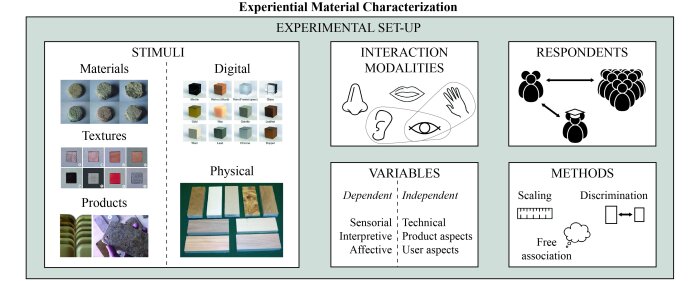How can we capture the way consumers and end-users experience materials, i.e. experiential material characterization, and embed it better in product design? In this dissertation, we investigated how we can study the materials experience of different types of consumers, so that designers and marketeers can focus on experiential qualities of materials for the target group of the product to be designed.
Nowadays, we are living in a world with an abundance of products available. Thus, how do consumers choose one model of a product to actually buy? In order to please demanding consumers, products need to fulfil both functional and hedonic user needs. First of all, a product should function properly and safely. Second, a product should be easily understood and handled. Third, a product should augment the user’s life, and give satisfaction and pleasure. We interact with materials through products, and it is through the senses that we experience materials. Without materials, no product; materials are the visual and tactile interface with the world around us.
As product design is a user-centred discipline, putting the focus on the study of people and their relationship with materials, as opposed to the study of merely materials on their own. Therefore, the focus of this dissertation was the exploration of the experiential characterisation of materials, where both the physical representation of materials and the segmentation of different types of consumers were integrated.
-
 Material Demonstrator
Material Demonstrator -
 Experiential Material Characterization
Experiential Material Characterization
Link with REuse Lab
As designers, we have the responsibility to reflect on environmental concern and to transition towards a more sustainable and circular economy. Building further upon the importance of materials as an interaction medium, they have a significant impact on product attachment and as such on its longevity of usage.
Several strategies can be employed to design longer-lasting products by accentuating different experiential material qualities, such as the encouragement of appropriate behaviours (e.g. to keep for longer and to care for).
Well-known and traditional materials often carry meanings that are grounded in sensorimotor experience and can be considered universal – such as wood that is warm to touch and is accordingly perceived as cosy or inviting – or materials that are predominantly used in a specific context can be associated with learned meanings. However, new or alternative materials encounter difficulties in their adoption and acceptance as their meanings still need to be discovered and learned, before they become intrinsic over time.
Timeline: 2017-2022